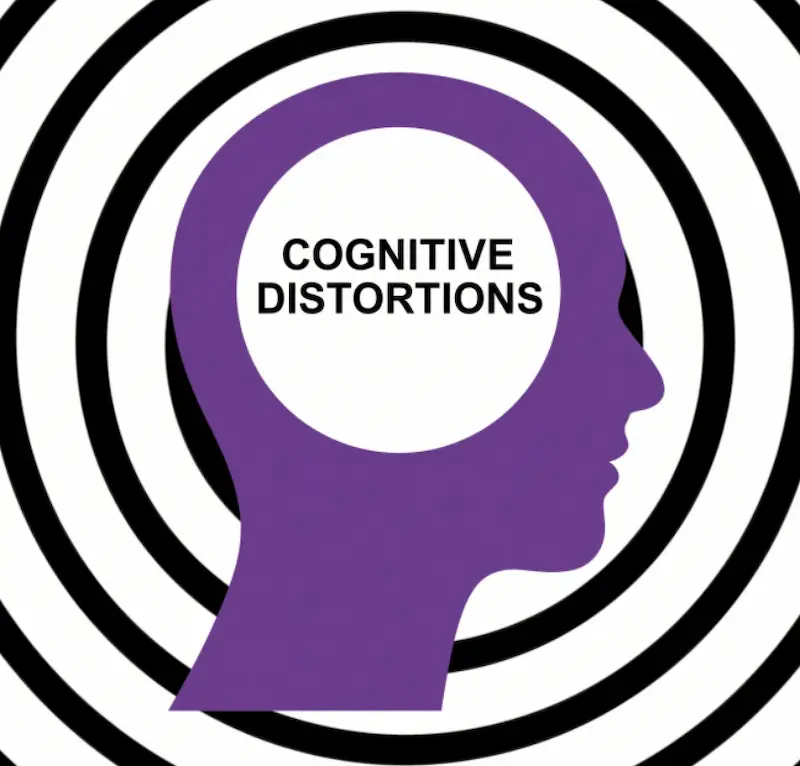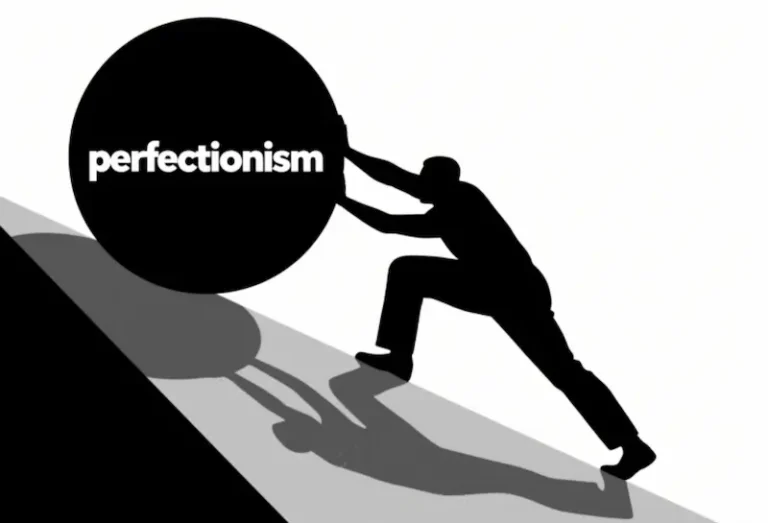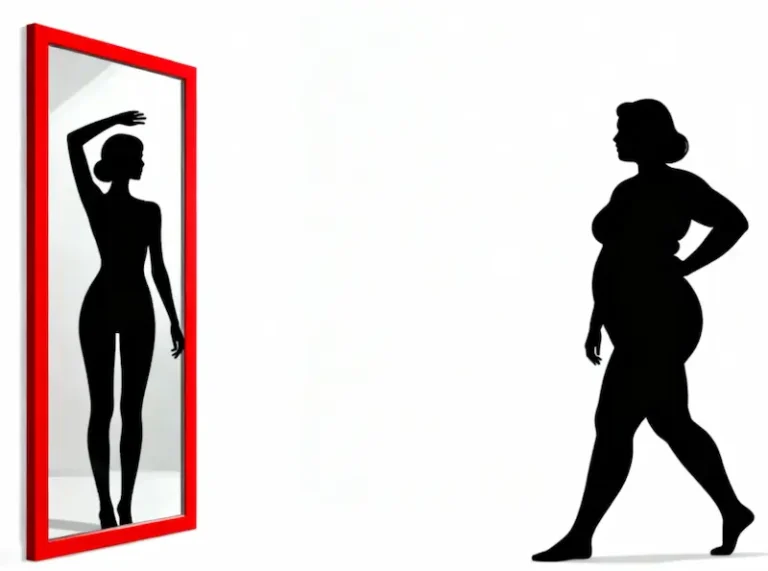Cognitive Distortions: What They Are and How to Overcome Them for Less Anxiety

Table of Contents
Do you ever walk out of a team presentation at work convinced you “totally failed” just because you stumbled over one line? Or spiral into doubt about a friendship when a friend cancels plans last minute—assuming they “never cared about you”? These upsetting, all-too-common reactions aren’t random. They often stem from cognitive distortions—persistent thought traps that skew our perception of reality and fuel unnecessary anxiety.
For many Americans, cognitive distortions fly under the radar. The CDC reports that 1 in 6 U.S. adults experience anxiety or mental health challenges each year, and research from the American Psychological Association (APA) links unaddressed cognitive distortions to long-term stress, low self-esteem, and even relationship strain. The good news? Once you learn to spot these twisted thought patterns, you can rewrite them—and reclaim your peace of mind.
What Are Cognitive Distortions? Definition and Impact
Cognitive distortions are systematic errors in thinking that disconnect us from objective facts. Unlike occasional negative thoughts (e.g., “I’m tired today”), these patterns are deeply ingrained, shaped by life experiences, and repeat themselves automatically—even when evidence contradicts them.
The APA defines cognitive distortions as “thought shortcuts that distort reality to fit our existing beliefs.” For example: If you believe you’re “bad at public speaking,” a small mistake during a work talk won’t feel like a minor blip—it will confirm your core belief that you’re “terrible” at communicating.
Over time, these distortions chip away at mental health. A 2022 study published in the Journal of Clinical Psychology found that people who regularly fall into cognitive distortions are 3x more likely to report chronic anxiety. They also struggle more with daily decisions, from career moves to personal relationships, because their thinking is clouded by bias.

5 Common Types of Cognitive Distortions
Cognitive distortions show up in predictable ways. Below are the 5 most prevalent types:
1. All-or-Nothing Thinking (Black-and-White Thinking)
This distortion forces you to see the world in extremes: “perfect” or “failure,” with no middle ground. There’s no room for “good enough” or “progress”—only two outcomes.
- College example: A student scores a B+ on a biology exam. Instead of celebrating that they outperformed 70% of the class, they fixate on the “missing” A. They label themselves a “failure” and skip their study group, convinced they “can’t do well in science.”
- Work example: A marketing manager leads a campaign that drives 20% more sales—but misses one small target. They tell their team, “This campaign was a flop,” ignoring the revenue growth and positive customer feedback.
All-or-nothing thinking is especially common in the U.S., where cultural values often emphasize “winning” or “excellence” over progress. This pressure can turn small setbacks into full-blown crises in our minds.
2. Overgeneralization
Overgeneralization happens when you take one small experience and blow it up into a universal rule. You use words like “always” or “never” to describe yourself or others—even when the evidence says otherwise.
- Job search example: A recent graduate applies to 5 jobs and gets rejected from one. They immediately think, “I’ll never get hired anywhere. No company wants me.” They stop applying, ignoring the 4 pending applications and their relevant internships.
- Relationship example: A person gets ghosted by one date. They conclude, “Everyone always leaves me. I’ll never find a partner.” They avoid dating apps for months, missing out on potential connections.
This distortion thrives on fear of uncertainty. Instead of seeing a single event as isolated, our brains turn it into a “pattern”—a way to “protect” us from future hurt, even if it’s irrational.
3. Mental Filtering (Selective Attention)
Mental filtering is like wearing a pair of glasses that only lets you see the negative. You fixate on one small flaw or criticism and ignore all the positive parts of a situation.
- Creative example: A graphic designer shares a client project on LinkedIn. They get 25 comments praising their work—plus one note saying, “The color scheme feels off.” They spend the next 3 hours reworking the design, convinced the project is “awful” and that they’re “losing their touch.”
- Parenting example: A mom takes her toddler to a playdate. The kid shares toys, laughs, and plays nicely—except for one moment when they grab a toy from a friend. The mom leaves feeling like a “terrible parent,” forgetting all the kind behavior her child showed.
Mental filtering is common in social media culture, where people are bombarded with “perfect” highlights. We start filtering our own lives to match that unrealistic standard, focusing only on what “went wrong.”
4. Catastrophizing
Catastrophizing is when you take a small problem and imagine the worst possible outcome—turning a molehill into a mountain. Your brain jumps to “disaster mode” even when the risk is tiny.
- Health example: A man wakes up with a mild headache. Instead of thinking, “I probably didn’t sleep well,” he panics: “This is a brain tumor. I’m going to get sick and lose my job.” He calls his doctor 3 times in one day, missing work to worry.
- Work example: A teacher forgets to grade one set of papers. They think, “My principal will fire me. I’ll lose my teaching license. I’ll never find another job.” They stay up all night grading, even though the principal had already said late papers were “no big deal.”
A 2021 survey by the Anxiety and Depression Association of America (ADAA) found that 45% of U.S. adults with anxiety engage in catastrophizing. It’s our brain’s way of trying to “prepare” for danger—but it ends up making us more stressed.
5. Emotional Reasoning
Emotional reasoning is when you confuse “how you feel” with “what is true.” You think, “I feel it, so it must be real”—even if facts prove otherwise.
- Self-esteem example: A woman has a bad day at work. She feels “worthless,” so she concludes, “I am worthless. I contribute nothing to my team.” She skips a friend’s dinner party, even though her boss praised her work that morning.
- Relationship example: A man gets annoyed with his partner for forgetting to buy milk. He feels “disrespected,” so he thinks, “They don’t care about me at all.” He gives them the silent treatment, ignoring that his partner usually goes out of their way to help him.
Emotional reasoning is tricky because feelings feel real. But as the APA notes, emotions are signals—not facts. Just because you feel “incompetent” doesn’t mean you are.
What Causes Cognitive Distortions? 4 Key Factors
Cognitive distortions don’t develop overnight. They’re shaped by a mix of personal experiences, personality, and even culture.
1. Childhood Experiences
Our early years lay the foundation for how we think. If you grew up with caregivers who were overly critical or inconsistent, you’re more likely to develop cognitive distortions later in life.
- A child who’s constantly told, “You’re lazy if you don’t get straight A’s” may grow up with all-or-nothing thinking: “If I’m not perfect, I’m lazy.”
- A child who’s ignored when they’re upset may learn emotional reasoning: “If I feel sad and no one cares, I must be unlovable.”
These messages become “mental scripts” that play on repeat in adulthood—even when we don’t realize it.
2. Personality Traits
Certain personality types are more prone to cognitive distortions. People who are highly sensitive (about 15–20% of the U.S. population, per research from the University of California, Berkeley) or have low self-esteem often notice negative cues more easily.
For example: A sensitive person may pick up on a coworker’s “off” tone and immediately think, “They’re mad at me”—while a less sensitive person might not even notice the tone. This isn’t a “flaw”—it’s just how some brains are wired—but it can make cognitive distortions harder to spot.
3. Chronic Stress or Anxiety
When you’re stressed for a long time, your brain shifts into “survival mode.” It starts prioritizing negative information to “protect” you from danger—but this makes cognitive distortions worse.
During the COVID-19 pandemic, for example, a 2023 study in the Journal of Anxiety Disorders found that U.S. adults reported a 30% increase in cognitive distortions. People were more likely to catastrophize (“If I go to the grocery store, I’ll get sick”) or overgeneralize (“All public places are unsafe”).
Chronic stress shrinks the prefrontal cortex—the part of the brain that helps us think rationally—making it harder to fight distorted thoughts.
4. Cultural and Social Pressures
People often emphasizes “success,” “productivity,” and “perfection”—norms that can feed cognitive distortions.
- Social media: Platforms like Instagram and TikTok are filled with curated “perfect” lives. When you compare your messy, real life to these highlights, you may use mental filtering (“Why is everyone happy except me?”) or overgeneralize (“I’m the only one struggling”).
- Workplace culture: The “hustle culture” in many industries tells people, “You’re only valuable if you’re working 24/7.” This can lead to all-or-nothing thinking (“If I take a day off, I’m lazy”) or emotional reasoning (“I feel unproductive, so I am unproductive”).
How to Overcome Cognitive Distortions: 5 Science-Backed Strategies
The good news about cognitive distortions is that they’re learned—which means they can be unlearned. Below are 5 practical strategies, backed by cognitive-behavioral therapy (CBT) research, to help you rewrite twisted thoughts.
1. Start with Self-Awareness (The First Step)
You can’t change a thought pattern if you don’t notice it. Self-awareness means catching cognitive distortions as they happen—and naming them.
Try this daily exercise:
- Journal your thoughts: When you feel anxious, upset, or self-critical, write down the thought (e.g., “My boss hates my work because they asked for revisions”) and the emotion (e.g., “fear”).
- Label the distortion: Look at your list of common distortions and match the thought. In this example, it’s catastrophizing (assuming “hating my work” is the only reason for revisions).
- Ask: “Is this a fact—or a thought?”: Facts are provable (e.g., “My boss asked for revisions”). Thoughts are interpretations (e.g., “They hate my work”).
Apps like Headspace or Calm can also help with mindfulness—training you to observe your thoughts without judgment. A 2022 study found that just 10 minutes of daily mindfulness reduced cognitive distortions by 25% in U.S. adults.
2. Challenge Unrealistic Beliefs (Fight Back with Facts)
Once you spot a cognitive distortion, challenge it with evidence. This is the core of CBT—and it works.
For example, if you think, “I’m a terrible friend because I forgot my friend’s birthday,” try this:
- List the evidence for the thought: “I forgot their birthday.”
- List the evidence against the thought: “I texted them every week when they were sick. I helped them move last month. They said I’m ‘one of the most reliable people’ they know.”
- Write a balanced thought: “I made a mistake by forgetting their birthday, but that doesn’t make me a terrible friend. I’ve shown up for them many times.”
This exercise trains your brain to look at the whole picture—not just the negative parts. Over time, it becomes automatic.
3. Get Feedback from Trusted People (Use a “Reality Check”)
Our brains are biased—so sometimes we need an outside perspective to see the truth. Ask a friend, family member, or colleague to help you spot cognitive distortions.
For example: If you think, “My presentation was a disaster,” text a coworker who was there: “How do you think the presentation went?” Chances are, they’ll say, “It was great—everyone was engaged!” This feedback can break the cycle of mental filtering or catastrophizing.
Just make sure to choose someone who’s honest but kind—someone who will tell you the truth, not just agree with your negative thoughts.
4. Learn Emotional Regulation Skills (Calm Your Brain First)
When you’re upset, your brain can’t think rationally. Emotional regulation skills help you calm down so you can fight cognitive distortions.
Try these quick, evidence-based techniques:
- Box breathing: Inhale for 4 seconds, hold for 4 seconds, exhale for 4 seconds, pause for 4 seconds. This activates your parasympathetic nervous system, reducing anxiety in 1–2 minutes.
- Physical movement: Take a 5-minute walk outside. Exercise releases endorphins, which boost mood and clear foggy thinking. A 2021 study found that 10 minutes of walking reduced emotional reasoning by 30%.
- Grounding technique: Name 5 things you see, 4 things you feel, 3 things you hear, 2 things you smell, 1 thing you taste. This pulls you back to the present moment, away from catastrophic thoughts.
These skills are used in therapy offices across the U.S.—and they work for everyday situations.
5. Expand Your Perspective (Widen Your Cognitive Horizons)
Cognitive distortions thrive in narrow thinking. The more you learn and experience, the easier it is to see reality clearly.
- Read diverse content: Books, articles, or podcasts about mental health (like The Anxiety and Phobia Workbook by Edmund Bourne) can help you recognize that cognitive distortions are common—not a “flaw” in you.
- Talk to people from different backgrounds: A conversation with someone from a different culture or career can challenge your assumptions. For example, a person from a collectivist culture may help you see that “not being perfect” is normal—and even valued.
- Try new things: Taking a cooking class, joining a sports team, or traveling (even locally) exposes you to new experiences. This helps you realize that your “rules” (e.g., “I’m bad at new things”) are just cognitive distortions—not facts.
CTA
Cognitive distortions are everywhere—but they don’t have to control your life. These thought traps, shaped by childhood, stress, and even culture, fuel anxiety, self-doubt, and missed opportunities. But by learning to spot them (self-awareness), challenge them (with facts), and calm your brain (emotional regulation), you can rewrite your thinking—and live a more balanced, peaceful life.
Remember: You’re not “broken” for having cognitive distortions. They’re a normal part of being human—especially in a culture that often demands perfection. The goal isn’t to never have negative thoughts—it’s to stop letting those thoughts lie to you.
What about you? Have you noticed a cognitive distortion affecting your life—like catastrophizing before a big event or mental filtering after a social gathering? Share your experience in the comments below—we’d love to hear how you’re working through it.
If you found this guide helpful, pass it to a friend or family member who might be struggling with anxiety.






